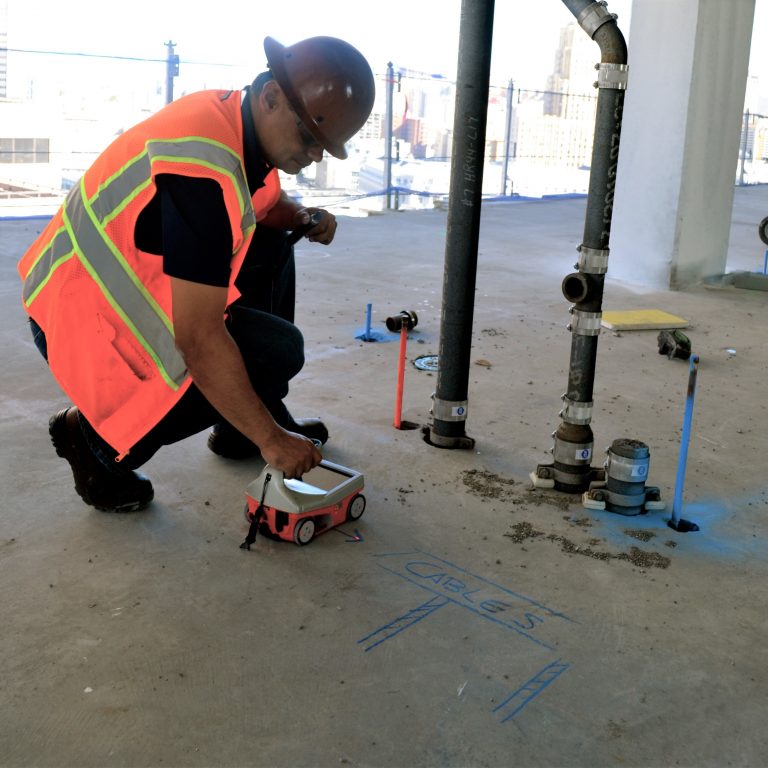The Ultimate RainierGPR Concrete Scanning Solution Clarified
The Ultimate RainierGPR Concrete Scanning Solution Clarified
Blog Article
Discovering the Midst: A Comprehensive Guide to Concrete Scanning and Its Diverse Applications
In the realm of construction and infrastructure advancement, the thorough process of concrete scanning holds a crucial duty in ensuring the architectural stability and security of projects. As modern technology proceeds to develop, the applications of concrete scanning have actually increased much past simple surface-level assessments.
Relevance of Concrete Scanning
Comprehending the importance of concrete scanning is critical in making certain the safety and security and integrity of structures throughout construction and restoration tasks. Concrete scanning uses advanced innovations such as ground-penetrating radar (GPR) and electromagnetic induction to identify embedded objects, spaces, or other abnormalities within concrete structures.
In addition, concrete scanning plays an essential role in making certain compliance with structure codes and policies that mandate the defense of existing structural parts during building and construction activities. By properly mapping out the internal make-up of concrete, scanning technologies enable building and construction experts to make informed decisions that maintain the structural security and resilience of structures and facilities projects. In significance, the importance of concrete scanning exists in its ability to safeguard both the architectural honesty and the personnel included in building undertakings.
Technologies Used in Concrete Scanning
Concrete scanning depends on advanced modern technologies such as ground-penetrating radar (GPR) and electro-magnetic induction to precisely find embedded items and abnormalities within concrete frameworks. Ground-penetrating radar runs by producing high-frequency electromagnetic waves right into the concrete.
Electro-magnetic induction, on the various other hand, functions by generating magnetic fields around a concrete structure via a transmitter coil. When steel objects are existing within the concrete, they interfere with these electromagnetic fields, triggering eddy currents to flow through the metal. By gauging the modifications in the magnetic fields with a receiver coil, the system can identify the place of metallic objects in the concrete.
These innovative modern technologies play a critical function in non-destructive screening, ensuring the security and integrity of concrete structures in numerous industries.
Applications in Building And Construction Sector
Within the building and construction market, concrete scanning modern technology finds diverse applications that enhance task efficiency and safety. Additionally, concrete scanning is used for locating voids, such as air pockets or areas of wear and tear within concrete, which can compromise the general stamina of a framework. Concrete scanning plays an important role in quality control by verifying the density of concrete covers over reinforcement, making certain conformity with design requirements and requirements.

Safety Benefits of Concrete Scanning
In the realm of building and construction safety, the execution of concrete scanning innovation offers a paramount advantage in preemptively recognizing possible risks and strengthening architectural stability. By utilizing advanced scanning approaches such as ground-penetrating radar (GPR) and electro-magnetic induction, building teams can accurately locate rebar, post-tension cables, conduits, and other surprise items within concrete structures. This positive method substantially minimizes the danger of unexpected strikes during exploration, reducing, or coring tasks, consequently avoiding pricey problems, injuries, and task delays.
Additionally, concrete scanning boosts employee safety by providing real-time details about the architectural problem my response of concrete aspects. This information enables building and construction experts to examine the stability of existing frameworks, recognize wear and tear or defects, and make informed choices regarding repair and maintenance treatments. By resolving prospective security worries promptly, concrete scanning adds to developing a safe working try this site setting and minimizing the possibility of structural failures or crashes on construction websites. Inevitably, the safety advantages of concrete scanning not just guard possessions and lives however additionally promote industry criteria for top quality and reliability.
Future Fads in Concrete Scanning
Emerging developments in scanning technology are poised to revolutionize the area of concrete examination and analysis. One major trend that is gaining grip is the integration of man-made intelligence (AI) and device understanding formulas into concrete scanning devices. By using the power of AI, these systems can assess huge amounts of data collected throughout scanning procedures to supply more exact and thorough insights right into the condition of concrete structures. This can aid in identifying hidden problems, predicting possible architectural failures, and also recommending maintenance methods.
One more considerable trend is the advancement of even more user-friendly and portable scanning gadgets. Miniaturization of scanning tools permits for less complicated access to confined spaces and remote places, making assessments much more detailed and reliable. Additionally, advancements in cordless interaction technologies make it possible for real-time data transfer and evaluation, facilitating quicker decision-making processes.
Additionally, there is a growing concentrate on sustainability in concrete scanning more modern technologies - RainierGPR Concrete Scanning. Manufacturers are progressively incorporating environmentally friendly products and energy-efficient functions into their devices to minimize ecological effect. These future fads are readied to improve the effectiveness, accuracy, and sustainability of concrete scanning techniques, shaping the industry's future landscape
Final Thought
In final thought, concrete scanning plays an important function in the building sector by ensuring the safety and efficiency of different projects. As technology breakthroughs, the future of concrete scanning holds promising growths for enhancing construction procedures.

Report this page